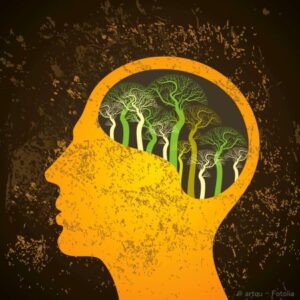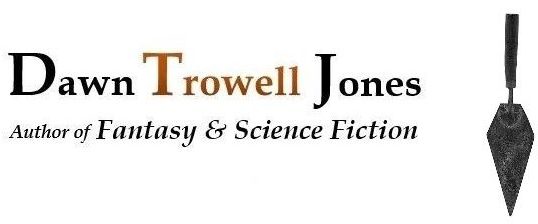I’m a dreamer and a worrier. And also a smatterer. Probably not an expert at anything.
Now that that’s settled, below are some topics that interest me, and I’m going to talk about them in a manner I find interesting: I’m going to meander a bit.
The fragmented way we pursue knowledge has worried me for a long time. Avoiding holistic approaches by design, our methods force understanding down narrow channels.
My concern is with the nature of scientific advancement—the quality of it, not the quantity—because so much of the advancement has to be piecemeal. When scientists habitually work the problem by dissecting it, they tend to see only trees (if not only branches or only leaves), not forests.
At first I wanted to say, “Our world is a dynamic system.” But what I should say is, “Our reality is a dynamic system that encompasses other dynamic systems”—worlds within worlds, where none is truly severable from the other. The patterns are what’s real. In fact, the patterns may be the only real information.
But most of discovery cannot be achieved in a plop-the-whole-thing-down approach. I understand. And there are scientists who work the overall structure of a particular problem and rely upon others to address its components. Even so, I worry this isn’t enough. Insight is greater than observation after experimentation. Insight is gestalt. Insight is at the heart of analysis.
 And so we get to my modest point: Scientists should study art.
And so we get to my modest point: Scientists should study art.
Yes, that’s simple, isn’t it?
And I don’t mean courses like “Physics in the Arts.” Nothing wrong with that, but it’s not what I’m talking about.
What I’m suggesting is that we methodically expose our proto-scientists and engineers to the great works of art throughout history, up to and including the present day. “Art Appreciation,” they’ll call it, although the course will probably be thought of as a joke.
Regardless of what they think, I’m dead serious. All those who’ll swing their machete-intellects wide to clear our path to enlightenment—who’ll lead us to our brightest future—I want them exposed to the rich imagery in art.
I suggest there’s a reason why fringe theorists see circuit boards in prehistoric rock paintings. I say their observation of the similarity is not only valid but also meaningful. But isn’t it far more likely the pattern was already there, rather than as a result of an ancient alien visitation? Then later we perceive the pattern again and this time it’s applied—and it just so happens to be an ideal design for a circuit board.
So the fringe theorists probably have it wrong.
But their observations are interesting.
I loved reading in C.G. Jung’s Man and his Symbols how the chemist Kekule agonized over the hidden structure of the benzene molecule until it came to him in a dream of an ouroboros. Kekule’s subconscious mind had already gathered enough data to perceive the answer, and it was able to communicate that answer to his conscious mind through this ancient symbol. What a shame it would have been if Kekule had never seen an artist’s rendering of the ouroboros. What a shame if his mind had not filed the image away as a pattern. There are other examples in history of this sort of cross inspiration.
But why would pattern representation in art enhance our scientific investigation of the natural world? Maybe because patterns are a reflection of the natural world. I might even suggest, as ancient philosophers have, that the pattern may be more real than the epiphenomenon science experiments with–although working with a pattern might go better if one doesn’t forget it’s only a pattern.
We should probably continue with observation and experimentation.
But what if these patterns are the lattice-work on which everything hangs, and it all more or less hangs together?
The scientific method clearly has furthered technology and deepened our understanding of the universe, and it’s done so at a thrillingly heady pace. Don’t stop! I don’t say stop. I’m not even saying slow down. All I’m saying—and others have said this before—is that there is a place at the table for wild speculation, the crazy questions. There’s even a place for the ‘man in the moon.’
I’m saying there’s a reason why intuition has value. And art reflects that value.
In my ignorance in my twenties, I used to call this process “paradigmatic thought association.” I’m sure it has some formal term in psychological circles. Consider it pattern thinking meshed with the weight theory of cognition. Imagine a spider web that represents a concept, and once a certain minimal number of unique nodes in the web are triggered (data), the entire pattern is implied and the web starts to vibrate. That vibration has meaning. It might even be the only thing that’s real in the world. Voilà! The ringing of the web becomes an uncannily accurate intuition, and suddenly a snake eating itself implies the structure of a molecule.
And art clearly has not been independent of scientific advancement either. Again, it’s not severable. Our scientific understanding expands as our perceptions expand. It’s the triggering of the nodes in the web. Those changing perceptions not only drive further scientific advancement but also affect artistic expression.
But what is art if not a reflection of the complexity of a culture? Culture itself is communication. Culture is the ultimate purveyor of human understanding. Because of it we care about the pursuit of knowledge.
Consequently, there is a feed-back loop at work here between cultural and scientific advancement. Please don’t let the only art and literature enriching the minds of our young scientists and engineers be what’s found in quick-to-market video games and TV commercials. Imagine fine art as its own form of thought experiment, a pattern with unlimited application—a dynamic message pointing in a million directions and teasing us out of ordinary thought.
Next: Cultural divides.
Essential to any culture’s advancement is the free flow of communication, including the sharing between cultures. Alexander the Great’s first roads to the orient and the standardization of roads in the Roman Empire are great examples. The printing press—we all know that one. The Internet—obviously.
We have all of that and more. So what’s holding us back?
Cultural divides still do. We choke off valuable conduits of information when we reject other cultures. Inaccessibility to other cultures’ art through prejudice or censorship hurts intellectual advancement.
Do I think we should blend together to cure the divide, that we should all be the same?
Absolutely not! No, we’d lose everything that is wonderful.
So what is the essence of the divide then?
It has to be our instinct to mistrust other cultures, not the fact that they differ. We need their art because it differs. This mistrust is an emotional noise that disrupts the delicate composition of the whole. There is an uber-culture we all share, and under it, we should be able to paint and sing and tinker together, among the stars.
Isn’t the story of the Tower of Babel a sad one? A cursed people previously united could no longer communicate with one another and so they could no longer build their tower. And then they scattered. After scattering, they no longer trusted one another. That’s sad.
On hearing the story as a child, I felt sorry for them that they had been punished in this way—hobbled, if you like. It was a story designed to make us sad and leery, to teach a lesson. I wished, when I heard the story, that God would forgive the people of the tower and restore them to their natural state, for it seemed they had been so accomplished before. I wanted them to thrive instead of shrieking nonsense out windows, unable to finish their great work. What if the curse could be undone? This is how a child thinks.
Mankind continues to dream itself into being. I say that more exposure to art would make our innovators better dreamers.
But we won’t know our full potential until we forgive ourselves, release the curse, and get on with exploring the universe together. In short, until we share all our art.
I’m not hopeful. I suspect this division is too instinctive, too deeply rooted in our psyches. It won’t be overcome… unless perhaps we can all somehow learn to quiet that particular part of the brain for a while, the part that distinguishes between self and other, the way certain meditation adepts can? Or unless we force unity politically under a world nation in pursuit of a common enterprise?
No, something’s missing. You really can’t circumvent human nature…. You have to co-opt it….
In conclusion: We as a species will continue to hobble along intellectually until we have a world nation and release this cultural dam, and we will never have a world nation until we have… another world.
Done! Problem solved. Let’s bypass the whole issue and colonize Mars.
—This is what I was thinking in the shower this morning. I thought it might do for a post.

Interesting post Dawn! I am all for anyone studying art. I think the scientific method requires a holistic view to be done well anyway. Having too narrow a focus can produce a lopsided, not to mention incomplete, view of reality.
Looking forward to more shower inspired posts from you. 🙂
Thanks, Lisa. You’re very much appreciated. –Such a long shower! I’ll do my best!